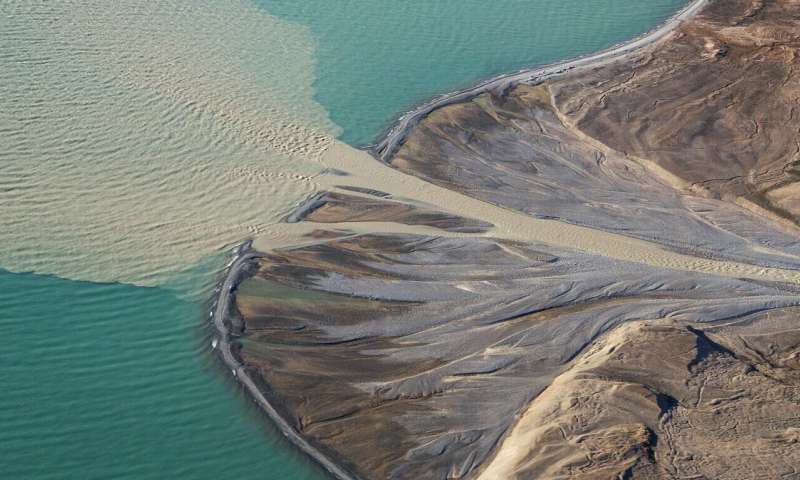Climate change speeding glaciers into cement
By Thomas Gaulkin | July 10, 2019

If you catch a bit too much sun playing on the beach this summer, you might end up thinking thoughts like those of Donald Trump and Mike Pompeo, who’ve taken to bragging about the United States’ environmental record while salivating over climate bonanzas (read: disasters) in the melting Arctic.
One of the consequences of dwindling ice: Melting glaciers are now delivering large quantities of silt and sand—the third most exploited resource on the planet—to their Atlantic outlets. A multimedia report by The New York Times placed Henry Fountain and Ben Solomon in a dinghy navigating the outflow from the Sermeq glacier in southern Greenland to get a better look at how global warming is creating new resources at same time it eliminates others.
The pair’s written and visual depiction of the sandy shallows comes across more like the Mississippi Delta than crystalline glacial water that might be expected 50 miles from Nuuk, Greenland’s capital. “Greenland’s ice sheet delivers about 900 million tons of sediment to the waters surrounding the island each year, or about 10 percent of all the sediment delivered to oceans worldwide,“ explain Fountain and Solomon. That’s a lot, and it will keep increasing along with global average temperatures.
So what is all that sand good for? Some replenishes beaches washed away by rising seas. But most of the world’s sand goes into construction materials—in the form of 10 billion tons of concrete produced every year, overwhelmingly by China. Manufacturing concrete takes a lot of sand (about 40 percent of concrete’s total weight) and is a surprisingly significant contributor to global carbon dioxide. Around five to eight percent of emissions are created by the heating of limestone to produce cement, the key ingredient of concrete, and some experts believe that figure could rise as high as 25 percent by 2050.
With all that dependence on sand, the world is running out of the stuff (desert sands like in the Sahara are too fine for most industrial use). And like many problems related to climate change, there are knock-on effects. For example, sand mining (already dangerous in itself) is eroding and collapsing riverbanks in Southeast Asia, which exacerbates flooding from rising seas caused by melting Arctic and Antarctic ice.
On the bright side, Reuters reported last week on efforts by US state and local authorities to sequester carbon emissions by using carbon-injected concrete with less cement—sand still required. If these new measures somehow help limit global heating and prevent Alaska from turning into Acapulco, hungry speculators like Pompeo might be happy to explore other opportunities: A worm recently discovered in Philippine rivers eats rocks and promptly excretes it—as sand.
Publication Name: The New York Times
To read what we're reading, click here
Together, we make the world safer.
The Bulletin elevates expert voices above the noise. But as an independent nonprofit organization, our operations depend on the support of readers like you. Help us continue to deliver quality journalism that holds leaders accountable. Your support of our work at any level is important. In return, we promise our coverage will be understandable, influential, vigilant, solution-oriented, and fair-minded. Together we can make a difference.
Topics: Climate Change, What We’re Reading















